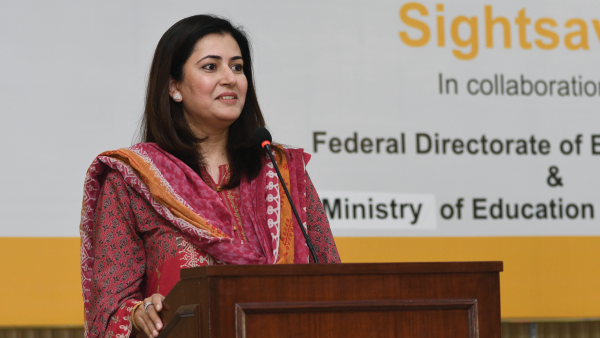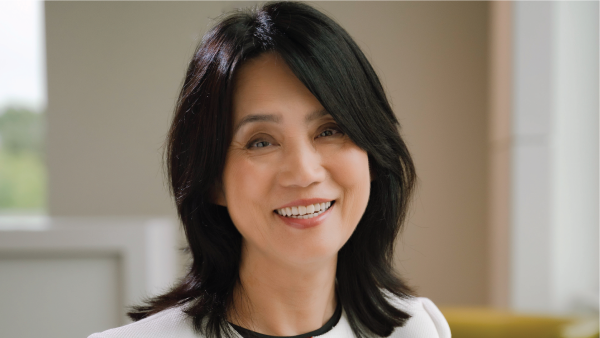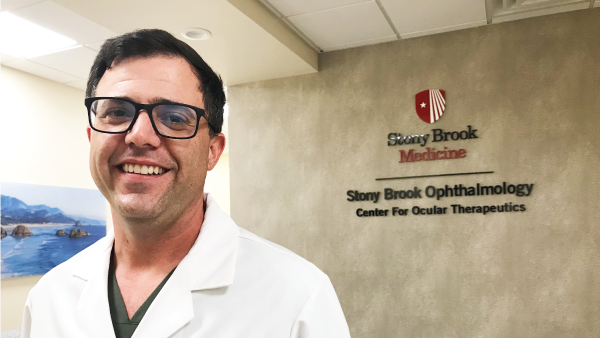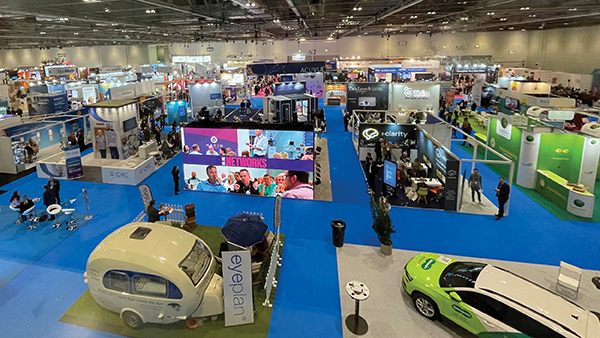AI and Early DR Detection
How artificial intelligence can improve the early detection of diabetic retinopathy
Statistics published by the World Health Organization show that a staggering 80 percent of all cases of blindness could have been avoided with regular eye exams. Neglecting these tests means missing opportunities to catch early signs of disease.
Speaking with The Ophthalmologist, Jessica Sutton, Clinic Manager of Mary Lanning Healthcare in Hastings, Nebraska, and Steven Yeh, Vice Chair of Clinical Research in the Department of Ophthalmology at the University of Nebraska Medical Center (UNMC) in Omaha, believe that one possible solution could be the widespread adoption of AI in imaging and detection – specifically, Eyenuk.
How can AI improve eye exam retention?
Jessica Sutton (JS): The importance of annual eye exams for patients specifically at risk of diabetic retinopathy (DR) cannot be understated. To date, a central causal element of this condition lies in the fact that many miss their exam due to limited access to eye care specialists – particularly in rural areas. It is also among the leading causes of vision loss in the US, yet an estimated 50 percent of patients with diabetes do not receive recommended annual screening eye exams.
Prior to implementing AI at Mary Lanning Healthcare, nearly half of our patients with DR had not received an eye exam in a year. This was due to a scarcity of specialists, a challenging payer mix, and transportation issues. So, when the team at UNMC introduced their AI technology to us, we were eager to see if it could increase compliance with the annual exam. As you can imagine, the best test for a patient is one that is easy for them to complete, and patients can now complete the screening in five minutes. What’s more, most of them do not need to have their eyes dilated.
Steven Yeh (SY): With AI, patients can be screened when they visit their primary care physician for an annual wellness check-up. The physician can tell them that the AI photo screening has shown that they need a more detailed exam, and then make that appointment for them. That really encourages patients to see an ophthalmologist. Our AI technology has increased screening rates within the Nebraska Medicine system, with over 400 patients screened and a nearly 30 percent DR detection rate.
What are the benefits of using AI for early DR detection?
JS: In our first full year of using the AI system, we saw a 39 percent rise in annual diabetic eye exam adherence, as the portion of patients with diabetes who received the recommended screening jumped from 55 percent to 77 percent. Over 22 percent of patients were diagnosed with either more-than-mild DR or the more severe vision-threatening form of the disease. Those with more-than-mild DR were referred to an ophthalmologist, while patients with vision-threatening DR were directed to a retina specialist.
The system was easy to use and our nurse assistants could administer the screenings. Each screening takes about five minutes and integrates smoothly into daily clinic operations. The clinic has actually saved staff time doing the screenings. Previously, we had to spend an average of 10 minutes phoning outside eyecare specialists to confirm a patient’s exam status. Patients too have saved time. Those with commercial insurance would previously have been screened at a local eye care specialist, which of course means a separate appointment. Patients with Medicare or Medicaid would have had to travel as far as Omaha to find a specialist who would take their insurance in a public clinic or Federally Qualified Health Center (FQHC) – a round trip that typically takes over six hours, when using public transportation.
SY: Among its many advantages over traditional methods, our system does not require dilation. That makes the screening much faster – about five minutes versus at least 30 minutes when you consider the time a patient spends waiting for the dilation to take effect and longer for it to wear off. Also, because it can be conducted in a primary care setting during a patient’s annual wellness visit or a visit for other reasons, more patients are likely to get the screening.
How can AI reduce health disparities?
JS: Our experience with AI has allowed us to overcome barriers of transportation, financial resources, and attendance. It has also pushed us to look at the question, “Where else can AI help eliminate these obstacles that keep patients from getting the care that they need?” The use of AI has even created point -of-care testing options that allow us to close gaps that were previously outside of our (and often the patients’) control.
What AI-driven progress might we see in the future?
SY: One phrase you’ll hear is “the eye is the window to your health.” This technology is already FDA-cleared to detect DR, and has regulatory clearance in the European Union to detect age-related macular degeneration (AMD) and glaucomatous optic nerve damage. But AI is also being used to understand other diseases – such as Alzheimer’s and Parkinson’s – and is thus demonstrating its ability to find additional information about disease states beyond ophthalmology.
JS: One of the unexpected outcomes we’ve seen from implementing AI in the clinic is just how much collaboration it has pushed between other healthcare entities in our community. It is not uncommon for silos to exist when it comes to specialty care of the patient, but closing the loop from primary care to a specialist can be challenging. In turn, the use of the EyeArt system has allowed us to create outlined pathways for our patients to see the right providers at the right time, which, ultimately, has ushered in a new approach to patient care.
Should ophthalmologists be worried about the increasing use of AI?
SY: I see this technology as complementary to the work we do as ophthalmologists. It can screen out patients who we don’t have to see for specific conditions such as diabetic eye disease, saving time and enhancing our abilities to detect disease. We previously tried a telemedicine protocol for conducting the screenings, but one barrier we observed was having the patient go to a clinic to get the picture taken. The AI-based point-of-care diagnostic approach reduces this potential barrier to diabetic eye disease screening and detection.
This doesn’t mean we’re in the clear just yet, however. As an industry, we must develop knowledge across multiple areas of implementation. For example, understanding information security and data transfer, building patient and health care provider trust, and ensuring the correct communication about what the AI is precisely assessing. The Eyenuk EyeArt AI system can determine whether a patient has diabetic retinopathy and, if so, whether it is considered vision-threatening. It does not yet provide a glasses prescription or replace a full eye exam.
The New Optometrist Newsletter
Permission Statement
By opting-in, you agree to receive email communications from The New Optometrist. You will stay up-to-date with optometry content, news, events and sponsors information.
You can view our privacy policy here
Most Popular
Sign up to The New Optometrist Updates
Permission Statement
By opting-in, you agree to receive email communications from The New Optometrist. You will stay up-to-date with optometry content, news, events and sponsors information.
You can view our privacy policy here
Sign up to The New Optometrist Updates
Permission Statement
By opting-in, you agree to receive email communications from The New Optometrist. You will stay up-to-date with optometry content, news, events and sponsors information.
You can view our privacy policy here







